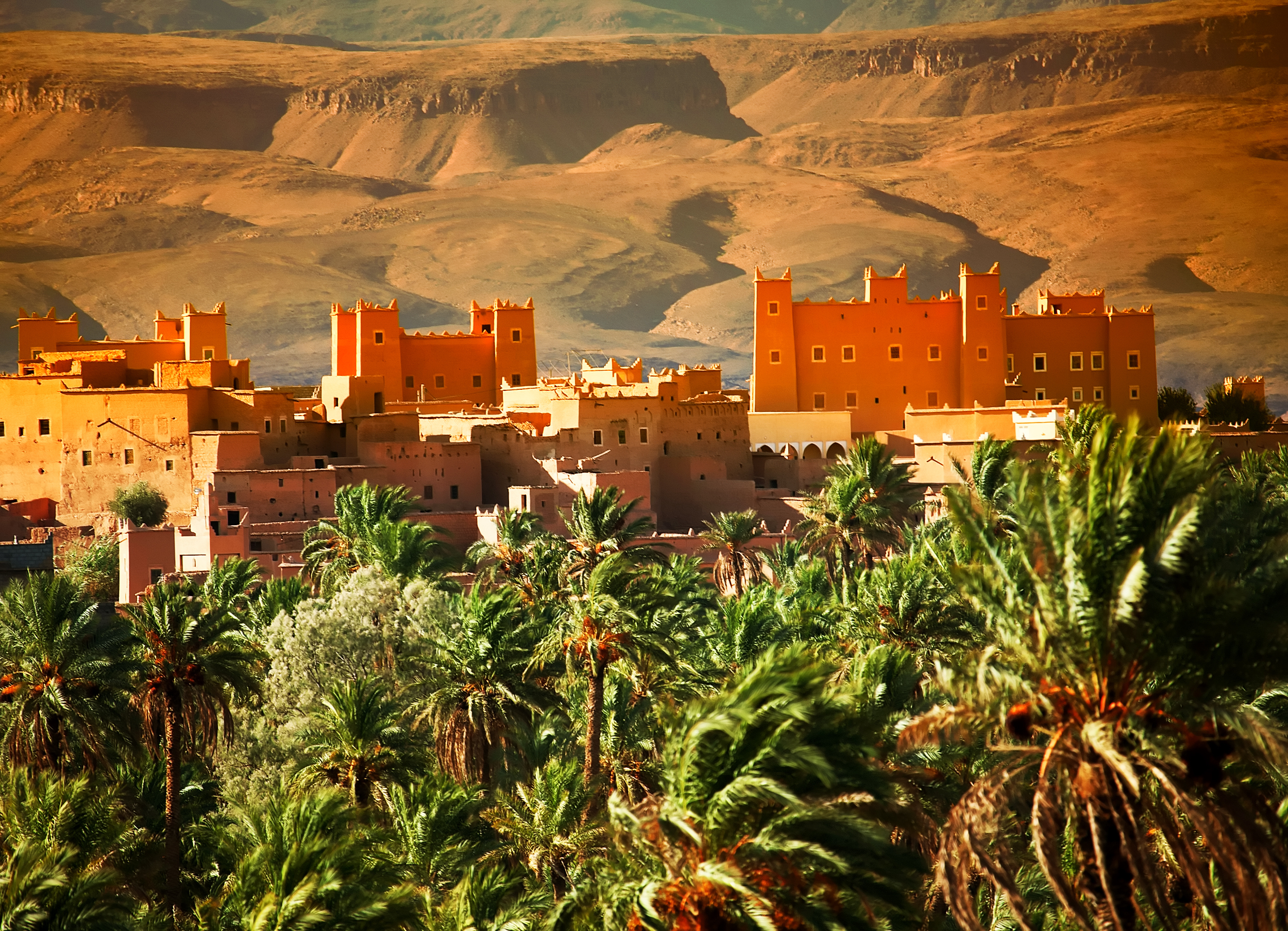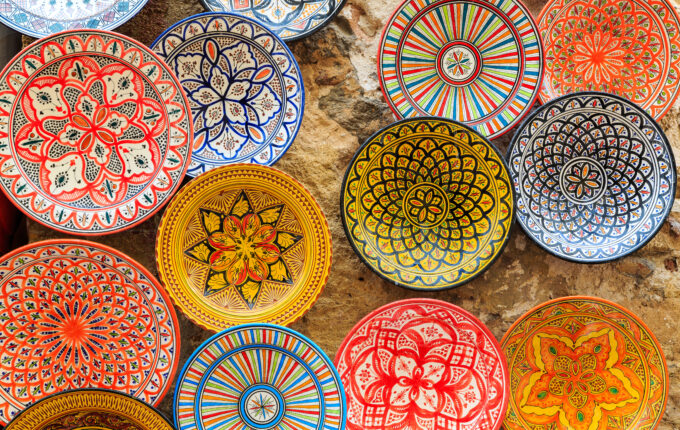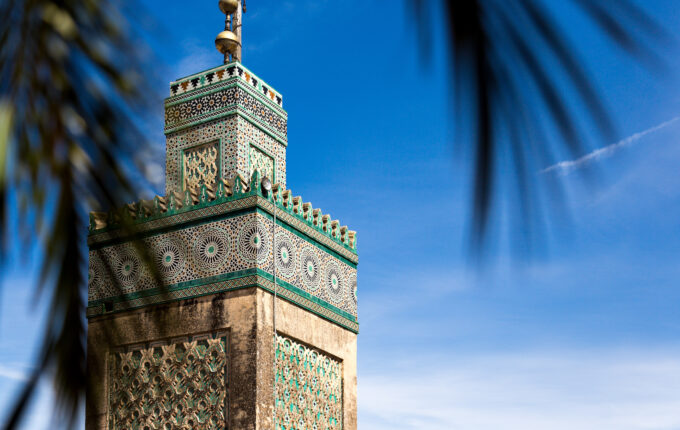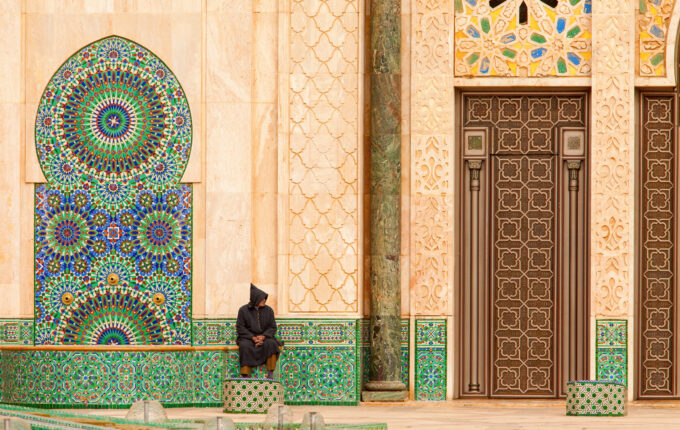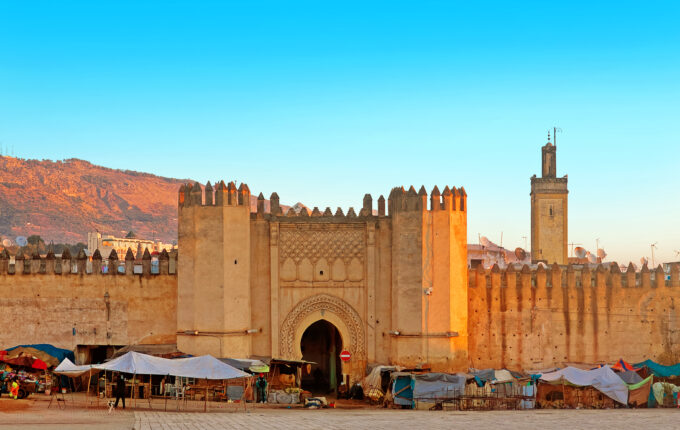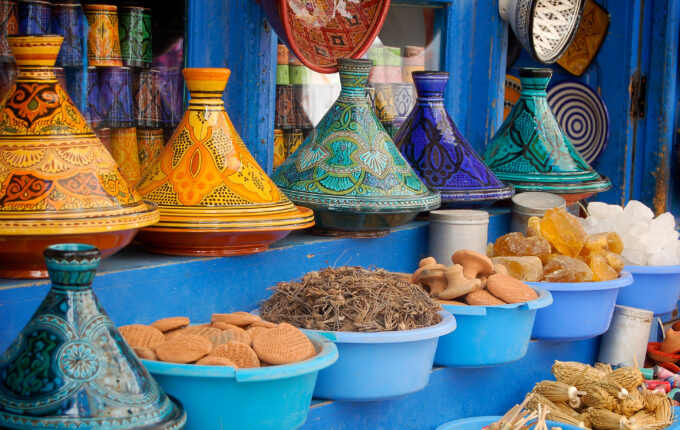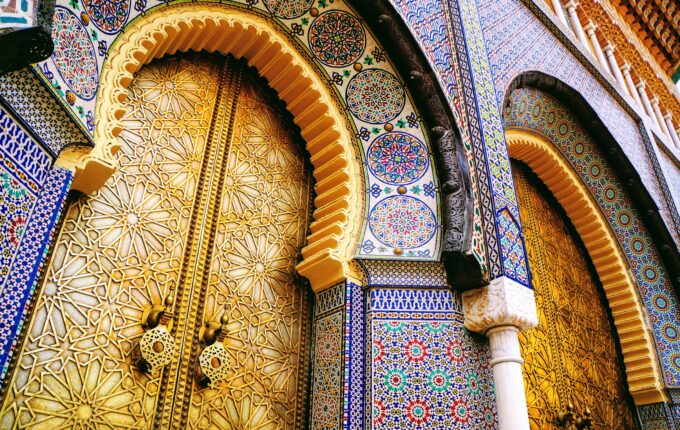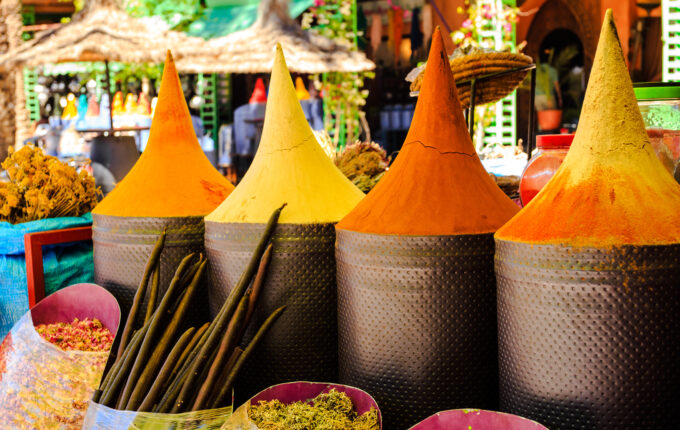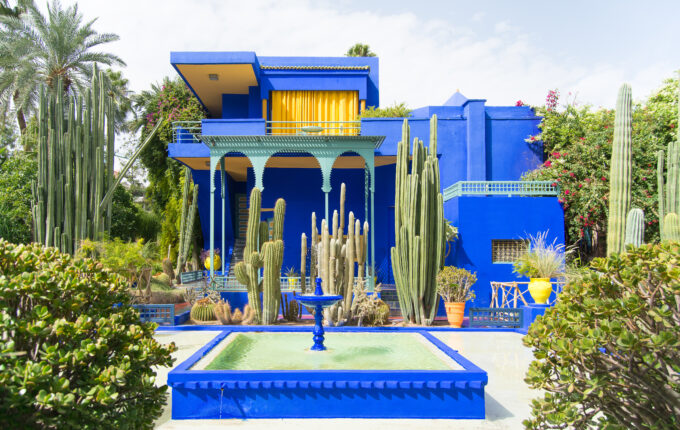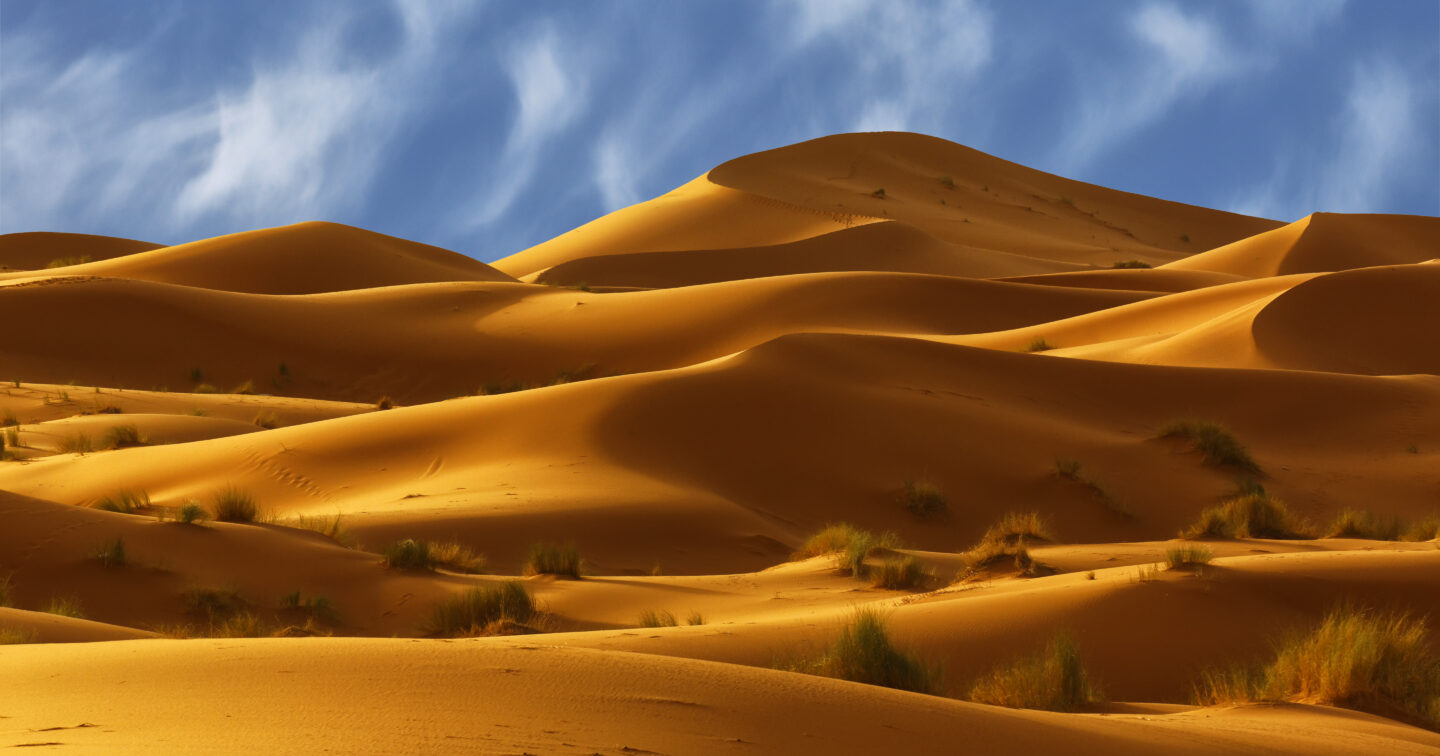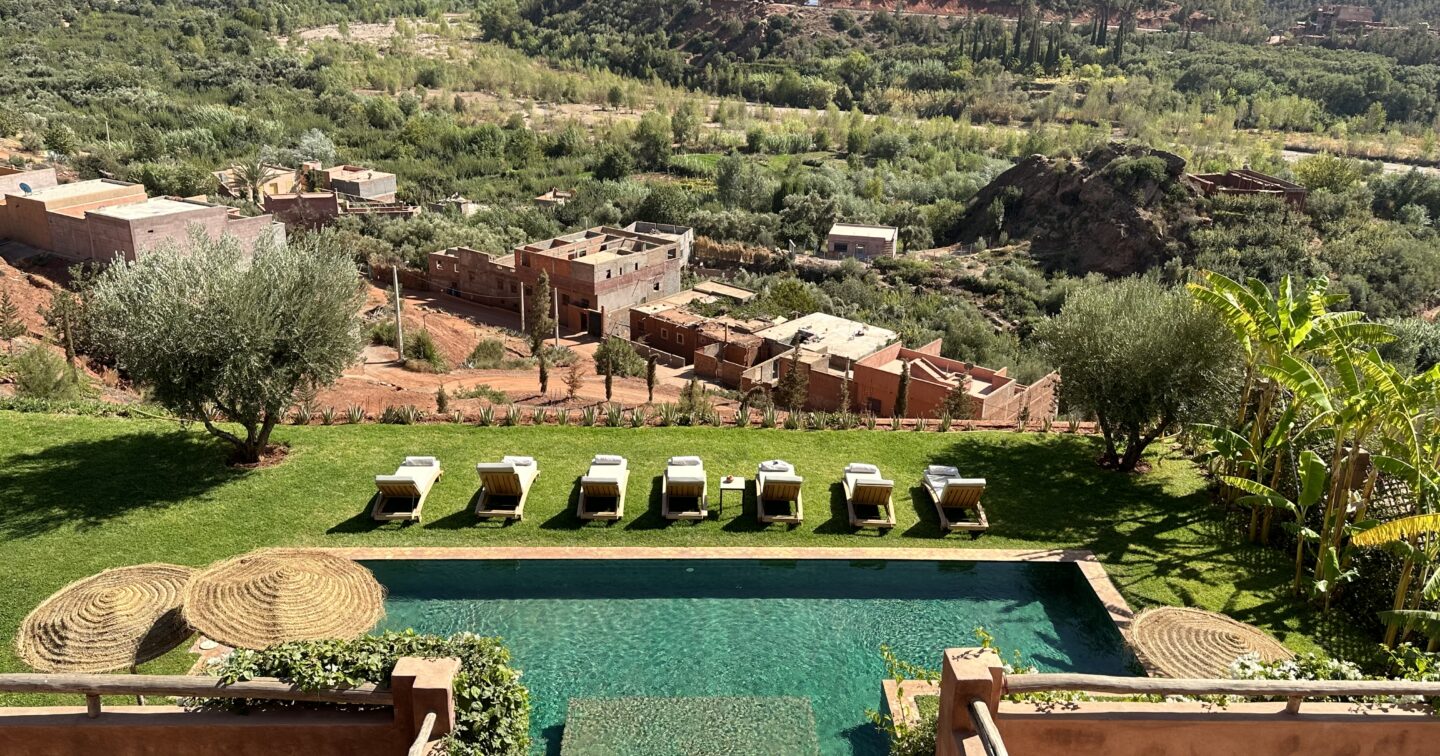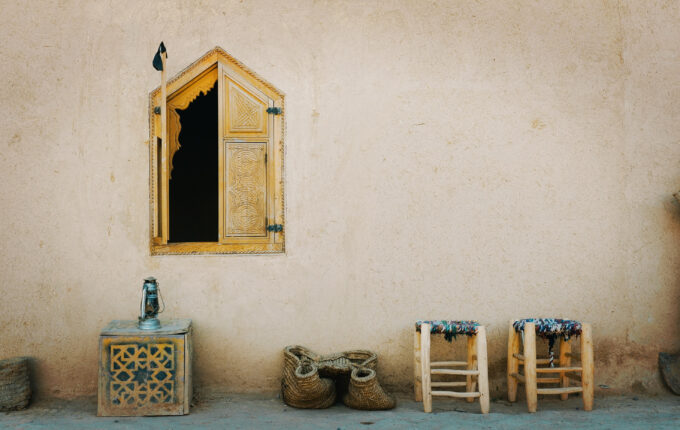October 8: DEPARTURE
- Depart the U.S.
October 9: RABAT
D,R
- Arrive in the stately capital city of Rabat and transfer to the Villa Mandarine.
- This evening, meet with Kathya Berrada a research associate at the Moroccan Institute for Policy Analysis, a Moroccan based think tank. Ms. Berrada is co-author of the book “Islamic Foundations of a Free Society” that addresses how many in the West view Islam with a mixture of fear and suspicion.
- Later enjoy a welcome reception and dinner with fellow travelers.
October 10: RABAT
B,L,D
- Meet with feminist Houda Zekri who will discuss some of the challenges Muslim women face being caught between two perceptions: conservative Islam and liberal Western. At the heart of this debate Muslim women are seeking to reclaim their right to speak in order to re- appropriate their own destinies, calling for the equality and liberation that is at the heart of the Qur’an.
- Later, enjoy a leisurely stroll through the cobblestone alleys of the millennium-old Oudaya Kasbah, a former lair of Barbary Coast corsairs, with an Andalusian garden. Just a short walk up the hill, the vibrance of the kasbah disappears into an enveloping history; the remains of the old Roman city appear out of the earthy hills in the Gardens of Sala Colonia in Chellah. This ancient site was almost completely destroyed during an earthquake of 1755, but thankfully parts still stand, along with the medieval Muslim tombs buried deep in the sand.
- After lunch a traditional Moroccan lunch at Dar Naji, visit the offices of the Moroccan Center for Innovation and Social Entrepreneurship, a not-for-profit dedicated to finding entrepreneurial and innovative solutions to social challenges in Morocco.
- Continue on to discover Rabat’s colonial district and its impressive Art Deco architecture including the dazzling white art deco cathedral. The local post office still stands as it did back in the 1920s, surrounded by an old police station and courts built in the 1930s.
- Stop at the semi-built Hassan Tower of 1196 which stands tall amongst a sea of stone columns. Next door is the Mohamed V Mausoleum which is a perfectly preserved example of the Alaouite dynasty’s architectural style and the final resting place of three significant members of the royal family. Although one cannot enter the mosque, it is one of the few holy sites in Morocco that is open to the public.
- Dinner this evening is at the hotel.
October 11: CASABLANCA
B,L,D
- This morning meet with Omar El Hyani, a member of the City Council of Rabat since 2015 representing the Democratic Left Federation (an opposition party). He is also Investment Director at Maroc Numeric Fund, a venture fund dedicated to Moroccan technology start-ups. In 2016, he was the manager of the electoral campaign of Omar Balafrej, who is now one of the most active MPs in the Moroccan Parliament.
- Depart for a drive of about one hour to Casablanca. The city's French colonial legacy is seen in its downtown Mauresque architecture, a blend of Moorish style and European art deco.
- Begin with a visit to the Hassan II Mosque. This flamboyant building was built at enormous expense to commemorate the former king’s 60th birthday. Set on an outcrop jutting over the ocean and with a 210m-tall minaret that serves as the city’s major landmark, it is a showcase of the very best Moroccan artisanship: hand-carved stone and wood, intricate marble flooring and inlay, gilded cedar ceilings and exquisite zellij (colorful ceramic tiling) abound. The mosque is commonly thought to be the world’s third- largest mosque after those in Mecca and Medina, and can accommodate 25,000 worshippers.
- Enjoy lunch at NKOA.
- After lunch drive to the Abderrahman Slaoui Foundation Musuem. We will be given a guided tour of the outstanding collection of Moroccan decorative arts. Schedule permitting, the group will be joined by Malika Slaoui Yaker, owner of the museum and daughter of Abderraham Slaoui.
- Later meet with the young street artist, Ed Oner, to see some of the incredible murals he has painted in the area.
- Return to Rabat and enjoy dinner at the hotel this evening.
October 12: FEZ
B,L,D
- Drive just over 2.5 hours to the vast ruins of Volubilis, Rome’s commercial capital for the region up to the 3rd century. In the fertile area that the ruined Roman city is located, it’s difficult to remember you’re in Morocco and the ruins stand as a testament to an empire that changed the world forever.
- In its heyday this was a sophisticated city that housed and fed 20,000 people from the time when B.C. turned to A.D. Walk down rutted streets where wagons and chariots once drove. The Appian Way runs through the ruins and it’s almost surreal to stroll along the paving stones of a road that was begun in 312 BC. Enjoy the outstanding collection of mosaic floors that rival any in the world.
- Continue on for about an hour to the Imperial City of Meknes, a UNESCO World Heritage site and the 17th century capital offering a fusion of color, culture and history. The great sultan, Moulay Ismail made Meknes his imperial capital and it is there that he is entombed.
- Enjoy lunch in Meknes at Riad Litaj before walking through the medina to the Mausoleum of Moulay Ismail.
- Visit the workshop of Hicham Essaidi, who has been producing beautiful damascene metalwork for many years.
- Drive about 45 minutes to the vineyards of Domaine de la Zouina, where we will enjoy dinner with five wine pairings carefully selected for each course.
- Later, arrive at the fabled city of Fez, Morocco’s 1,200-year-old spiritual capital. This is a perfect time to visit Fez which is enjoying a subtle transformation along its medieval alleyways. Ancient buildings are being restored, designers are breathing new life into age-old crafts and chefs are opening exciting restaurants.
- Check in to La Maison Bleue (or similar). Located just outside the medina walls, it’s a wonderful base from which to discover the labyrinth of Fez – the largest pedestrian zone in the world. Within minutes of the hotel you will find soaring minarets, shrines, pungent tanneries, copper beaters souks, traditional djellaba tailors and a wide selection of restaurants.
- Enjoy dinner at the hotel this evening.
October 13: FEZ
B,L
- After breakfast depart the hotel and walk to the heart of the medina where we will meet with Naima Lahbil who will talk about the preservation of the Fez medina. Naima is a professor of Economics at the Faculty of Law, Economics and Social Sciences in Fez and has published several articles on the medina of Fez. She has a strong interest in the changing face of urban Morocco and published a novel several years ago in which she explored issues surrounding the pace of change. She has long been a champion of the cultural and historic heritage of Fez and has worked with UNESCO and the World Bank on many projects.
- From here walk to the Glaoui Palace. Among the medina’s many hidden palaces, the extraordinary Dar al Glaoui is one of its most atmospheric. The Pasha of Marrakesh’s second home—he ruled over most of southern Morocco in his day—has fallen into disrepair since Morocco’s independence from France in 1956, when his power waned. But amid the crumbling ruins, evidence of its former grandeur is visible in the exquisite cedar wood doors, intricate stucco, tiled salons, and the carved wooden balconies that line its patios. The large estate was comprised of 17 buildings and two gardens, with ornate salons, an enormous kitchen, Koranic school, garages, stables, a harem, and a hammam. As you walk into the courtyard surrounded by great white pillars with a fountain in the center you can sense the grandeur of a feudal warlord’s palace.
- After lunch at a local restaurant, continue exploring Fez. A short distance away is the Fez water clock, the oldest form of time keeping in the world. Built by the “muwaqqit” (time keeper) Abou al-Hassan Ibn Ali Ahmed Tlemsani, the clock was finished on May 6, 1357, and kept inside Dar al-Magana, a house built by the Marinid Sultan Abu Inan Faris.
- Explore Nejjarine Square. Located near the carpenter district in the middle of the medina, this beautiful square is dotted with Andalusian-style architecture dating from the 18th century. At the centerpiece of the city’s extraordinary cultural and intellectual heritage is the Al-Karaouine complex which was founded in the ninth centry by Fatima al-Fihri, daughter of a wealthy merchant from Tunisia’s Kairouan. The complex includes the Qarawiyyin Mosque, the Qarawiyyin Library and the Qarawiyyin University, the oldest higher education institution in the world. Later, end the day at the ancient leather tanneries. Perhaps the spirit of Fez is felt strongest at the tanneries, whose dying vats have endured since the days of Harun al-Rachid.
- Visit the American Fondouk, founded in 1927 at the behest of Amy Bend Bishop, an American traveler who was distressed by the poor conditions of the many working animals in Fez Medina. This unique nonprofit organization is dedicated to providing people-to-people aid through offering free veterinary care for the hard-working donkeys, mules, and horses of Morocco. Donkeys are the main vehicles of transportation in the carless Fez medina and they are worked hard and sometimes thanklessly. Meeting the group will be veterinarian, Ahmed Khairoun.
- Meet with Professor Rddad, an assistant professor in the Department of English of Dhar El Mehraz, Fez, and a founding member of the Moroccan Cultural Studies Center and co-editor of the Moroccan Cultural Studies Journal. Dr. Rddad who will address the identity of the indigenous peoples of Morocco.
- Dinner is at leisure this evening.
October 14: MARRAKECH
B,L,D
- Drive about forty minutes to the small Berber town of Sefrou a picturesque place situated on the edge of the Middle Atlas and a major trading post for traders crossing from the Mediterranean to the Sahara. It has a small but interesting medina that was designated a UNESCO World Heritage site in 2013. Historically, Sefrou drew the most skilled artisans who came to sell their wares and later to practice their craft. Once Fez was built and made the capital by Idries II, many of those artisans moved to Fez, but some stayed and the medina of Sefrou is still populated by artisans who create beautiful crafts. Sefrou once hosted one of Morocco’s and Africa’s largest Jewish communities (as many as 8000 people, according to some accounts), and it was here that Moulay Idriss II lived while overseeing the building of Fez.
- Continue on to the town square and meet with Jessica Stephens where her company, Culture Vultures, has an office in one of the town’s historical fondouks – a medieval building set around a generous central courtyard with rooms on two levels. Nowadays these rooms are often the studios for local craftspeople. We will have a briefing with Jessica who will talk about crafts in Sefrou and provide some background and suggestions for how to engage with local artisans. In smaller groups, set out to meet with some of the many craftspeople located in the area. Return to the office for a chance to share experiences and enjoy a simple, local lunch.
- After lunch drive about thirty minutes to the airport in Fez for a short flight to Marrakech.
- Arrive in Marrakech and check-in to Les Jardins de la Koutoubia (or similiar) a converted palace on the edge of the medina with panoramic views from the rooftop terrace.
- Visit Djemaa el-Fna square, the city’s main square and a UNESCO World Heritage Site. By late afternoon the square becomes an open-air theater as it begins to fill with food vendors, water-sellers with fringed hats, henna tattoo artists, monkeys and oboe-playing snake charmers.
- Dinner tonight is at the hotel.
October 15: MARRAKECH
B,L,D
- After breakfast meet with activist Elias Terrass, a Morocco based film producer, grassroots festival and cine-club organizer, cultural and political activist, and freelance journalist. He was one of the producers of the upcoming documentary film (Amussu) that tells the story of a community’s continued struggle for environmental justice as they attempt to shut down a silver mine which has syphoned aquifer water for decades. As a political activist Elias has engaged in various struggles in Morocco from anti-privatization of education to land rights to environmental rights.
- Visit the beautiful 12th century minaret of the Koutoubia Mosque – Marrakesh’s iconic landmark – visible for miles around. Continue on to Bahia Palace, a prime example of Moorish-Andalusian architecture. It is a perfect example of the transition from tradition to modernity in Moroccan architecture at the turn of the 19th Century. The ceiling décor is the finest to be seen in Morocco and the garden patios are rooted in tradition.
- From here continue by bus to the Elazma Synagogue, which was built by Jews who were forced to flee Spain by Queen Isabel and King Fernando in 1492.
- Walk about 15 minutes through the Andalusian quarter of the medina passing a number of beautiful fondouks to the Ben Yousef Madrassa, considered the most beautiful building in Marrakech, and recently re-opened after extensive renovation.
- From here walk about 20 minutes through old Marrakech to lunch at Le Jardin Secret - the Secret Garden. A few steps from the riot of donkey carts, zooming mopeds and carpet, basket and spice vendors of the souks, the recently re-opened and restored 400 year old riad (a house with an interior courtyard) provides five acres of tranquil walled gardens.
- After lunch, enjoy time at leisure to explore Marrakesh’s souk.
- Later visit Jnane Tamsna, a little paradise of tranquility and the private home and resort of Meryanne and Gary Martin. Mr. Martin, an ethno-botanist, will give us a tour of his garden which is a natural paradise of aromatic herb gardens, olive groves, lemon trees, date palms, vegetable gardens, and ornamental flower beds. The landscape architecture is inspired by North African agricultural and horticultural traditions. The cultivated spaces are accessed by pathways and terraces festooned with gardenia, jasmine and white bougainvillea.
- Martin will talk about his work in a valley of the High Atlas Mountains, with its orchards and Berber villages. Learn about the programs he spearheads as Director of the Global Diversity Foundation and a specific project he is coordinating with a focus on plants native to Morocco and their uses. Also learn about EthnoBotanica Café - a new social enterprise based at Jnane Tamsna.
- Enjoy a lovely dinner at Jnane Tamsna.
October 16: AGAFAY DESERT
B,L,D
- This morning visit Marjorelle. The garden is named after its creator, Jacques Majorelle, a French born artist who settled in Marrakesh in 1919. Majorelle died in 1962 and the gardens remained unkempt, until 1980, when the French fashion designer Yves Saint Laurent and his partner Pierre Bergé bought the property and restored it.
- The centerpiece of the garden is his former residence, a two story house painted in Marjorelle Blue. The garden that Jacques built lives on as his creative masterpiece.
- Close by is the Yves Saint Laurent Museum which houses thousands of articles of clothing and haute couture accessories, all carefully selected by Pierre Bergé, Saint Laurent’s partner in business and in life.
- Enjoy lunch at the AMAL Restaurant which is run by the Amal Center, a non-profit organization dedicated to the empowerment of disadvantaged women through restaurant training and job placement. AMAL’s ultimate goal is to provide life and job skills so that trainees can achieve economic and social stability.
- Stop at the Women's Museum, dedicated to preserving, documenting, and celebrating the rich history, culture, and contributions of women in Morocco.
- Travel to Scarabeo Camp – where 12 oriental-inspired permanent tents are placed in the rocky desert of Agafay, a beautiful corner of Morocco. This rocky desert can be likened to a sand desert. Indeed, its white sand dunes and landscape are similar to the Sahara dunes. The camp’s location offers stunning 360 views of the Agafay’s barren grandeur and beyond to the snow-capped Atlas mountains. Dotted amongst the landscape, the spacious and comfortable tents are decorated with locally crafted artwork and form a harmonious whole with their surroundings. Each tent has private facilities including shower and toilet.
- After settling into your tent, enjoy a sunset camel ride.
- This evening, after dinner, marvel at some of the clearest star-gazing experiences you can imagine!
October 17: BAB OURIKA
B,L,D
- After breakfast drive to the village of Tameslouht, located in the foothills of the High Atlas Mountain range. Here we will visit a cooperative specializing in traditional hand weaving and embroidery.
- Enjoy a home-cooked meal and stunning views at Dar Adali, before continuing through the spectacular limestone Kik Plateau. Perched around 6,000 feet above sea level among the rugged peaks of the High Atlas, this is the Morocco that time forgot, where donkeys still plow the fields amid gnarled olive trees.
- Stop at the traditional village of Tahannaout before reaching Kasbah Bab Ourika. Perched on a hilltop against the soaring backdrop of the tallest mountain in North Africa, this award-winning boutique hotel features delightful terraces and gardens that offer magnificent views of the Atlas peaks. Your experience is an enjoyable immersion into Berber culture and the traditions of the area.
- Enjoy a freshly prepared dinner this evening.
October 18: BAB OURIKA
B,L,D
- This morning learn more about the threats to Berber life and food cultivation in the area. Visit a local village to learn about the vegetation which includes tamarinds, oranges, figs, guavas, pomegranates, lemons, limes, mulberries, carobs, quince, grapes, and other fruits and nuts.
- We will also learn about carpets as we explore local villages. This area of Morocco is famous for its boucherouite rugs and traditional high mountain rugs that have a variety of colors. Visit Cooperative Tifawin, a women’s cooperative. With the help of the local village Development Association, they have been able to successfully build their own small business. For the women, these rugs are like canvases where they can create new and unique designs. Twelve women have been part of Tifawin since its inception and they create unique designs in a remote and beautiful location.
- Drive a short distance away to the Anima Garden where universal artist André Heller has created an opulent, two-hectare botanical art piece. It’s hard to put into words the beauty of the garden wonderland of gazebos, ponds and mystical artworks. One trail passes a reproduction of Rodin’s “The Thinker,” who appears to contemplate a tall cone ringed with bands of color. Another lands you at a huge metal ark carrying a pyramid, a multicolored camel, a hollow giraffe and far weirder creatures. Turn again and you find a soaring African mask blowing smoke from its mouth.
- Enjoy lunch at Café Paul Bowles where produce from the garden is prepared creatively each day.
- Return to the hotel this afternoon for some free time before enjoying a farewell dinner this evening.
October 19: BAB OURIKA
B
- Transfer to the Marrakech airport for homebound flights.
Scheduled events, speakers and their timing are subject to change based on availability.
Trip Price
Per person double occupancy: $8,670 + internal air
Single supplement: $1,980
Included
- Accommodations based on double occupancy in hotels as listed
- Meals as listed in the program with wine at the welcome and farewell dinners
- Airport transfers in Rabat on designated arrival day and in Marrakesh on designated departure day
- All sightseeing and activities listed with a private air-conditioned vehicle
- Water on the bus
- The services of a local Moroccan guide who will travel with the group throughout
- Porterage
- Basic gratuities
Not Included
- International airfare to and from Morocco
- Airfare from Fez to Marrakesh (arranged by tour operator): $240
- Any meals not listed as included
- Drinks with meals other than bottled water and wine at welcome and farewell reception
- Trip insurance
- Excess luggage charges
- Any item not listed as included

